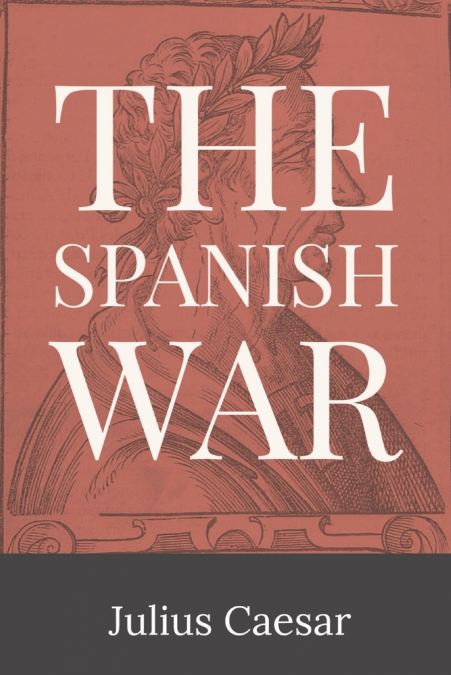
Julius Caesar / William Alexander McDevitte
 Donde los libros
Donde los libros
 Librería 7artes
Librería 7artes
 Librería Elías (Asturias)
Librería Elías (Asturias)
 Librería Kolima (Madrid)
Librería Kolima (Madrid)
 Librería Proteo (Málaga)
Librería Proteo (Málaga)
Caesar left Rome for Hispania in the spring of 49 BC to secure the province and to defeat Pompey’s seven legions that were under the command of Marcus Petreius, Lucius Afranius and Marcus Varro.Marching around the coast of Narbonensis, however, Caesar was stopped at the city of Massilia, where the well fortified town had been bribed into supporting Pompey.Caesar arrived on April 19 with three legions and immediately began to besiege the city, but he didn’t dare risk being delayed and allow the Spanish legions to either come to the defense or be transferred to Pompey in Greece. He ordered Gaius Fabius to continue on to the Pyrenees to secure the northern passes with three other legions and focused on the siege.The siege itself would turn into a long affair with mixed results. In all, it would end up taking six long months before the town would finally capitulate in October. By July though, Caesar couldn’t afford to waste more time commanding an idle siege and had to move on to Hispania, where Fabius was under heavy pressure from Petreius and Afranius. Caesar left Decimus Brutus in command of the small naval force at Massilia, and Gaius Trebonius was left to conduct the siege.Caesar arrived in Hispania and took command from a likely very relieved Fabius. Caesar’s men had suffered heavy casualties but managed to hold their positions and fend off attacks. No longer needing to hold the mountain passes, Caesar moved to Ilerda, where he began the systematic outmaneuvering and besieging of the opposition army. Initially, Pompey’s lieutenants did a fine job in defense against Caesar’s attacks, but as always the war of attrition, Caesar’s exceptional skill and his famous luck began to win out. Many of the more powerful tribes in the region preferred Caesar as well, bringing the Oscenses Calagurritani, Tarraconenses, Jacetani, Ausetani and Illurgavonenses to his side. With the support of the native cavalry, Caesar had the ability to encircle, cut off and outflank the enemy at every turn.Sporadic and skirmish-style fighting ensued, forcing Petreius and Afranius to retreat further into Hispania, while constantly seeking a position to fight on favorable terms. Caesar forced them towards the Ebro River, and in late July finally had them starved and scared enough to gain the advantage. Caesar, the master of the siege, hemmed in the enemy with fortifications, and forced Afranius and Petreius to seek a meeting. In a public display, and in audible range of the men on both sides, Caesar accepted the surrender of Pompey’s lieutenants and all the men under their command. Five legions, which were grateful for not having to fight any meaningful battle against Caesar’s troops, were disbanded and allowed to return to their homes and colonies within a few days.Caesar’s attention was next focused on his old friend Marcus Varro, in command of two legions in Hispania. Whilst Varro tried to be loyal to Pompey, as the honorable thing to do, both the locals and his own men preferred Caesar. Without even facing the enemy, one of Varro’s legions mutinied at Cadiz in Caesar’s favor, and any attempt to escape with an intact army was lost. Unable to defend and unable to take the remaining men to Greece, Varro sent word to Caesar in Corduba that he would surrender. In mid August, Varro did just that.